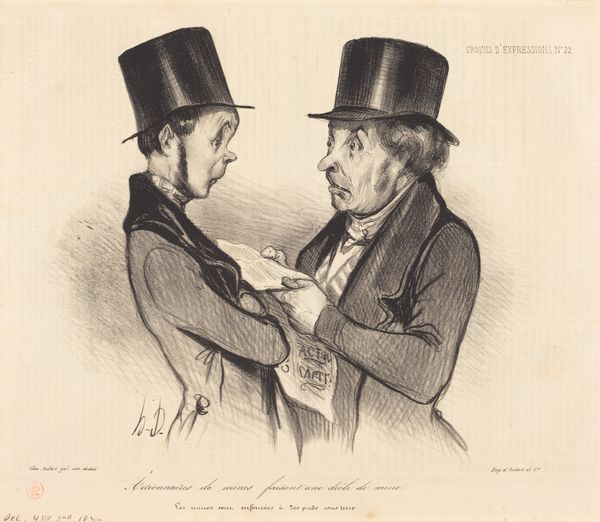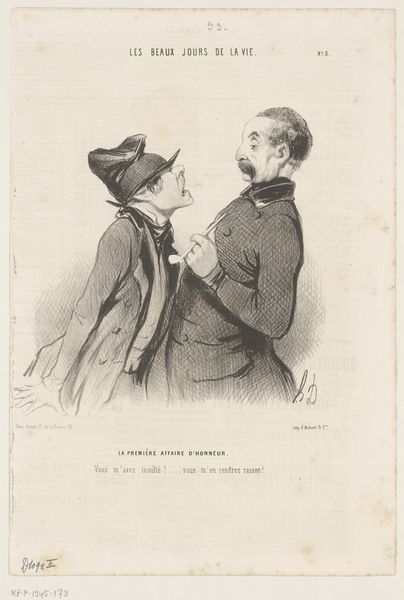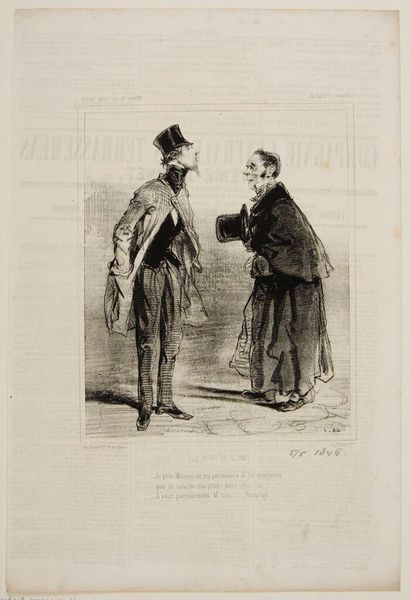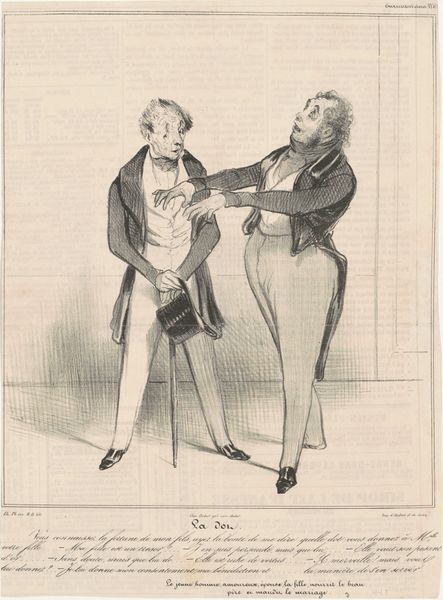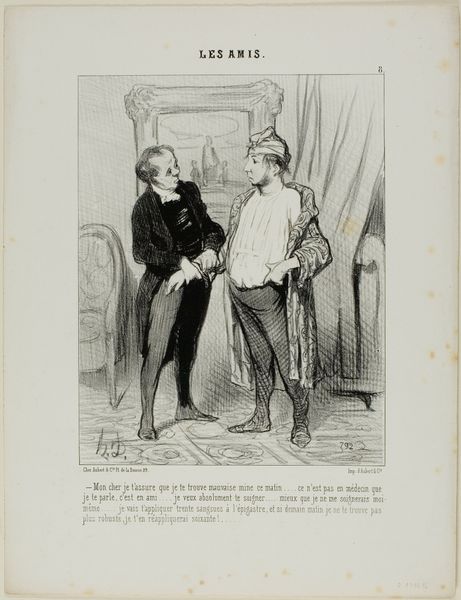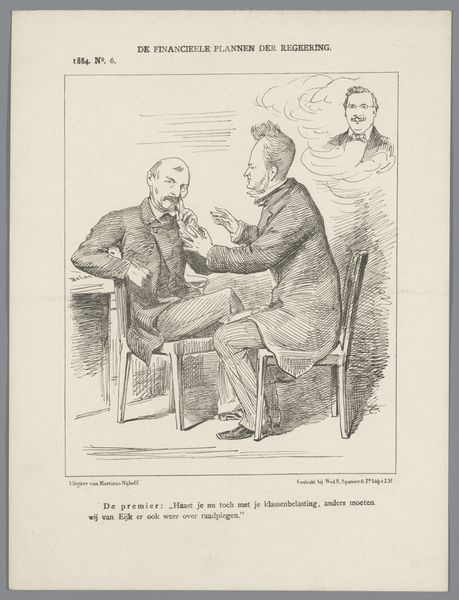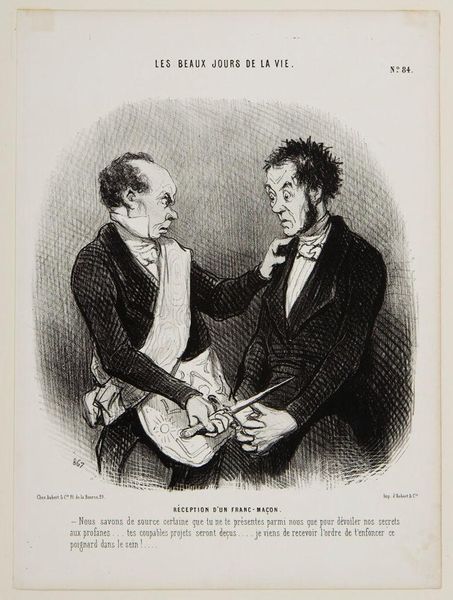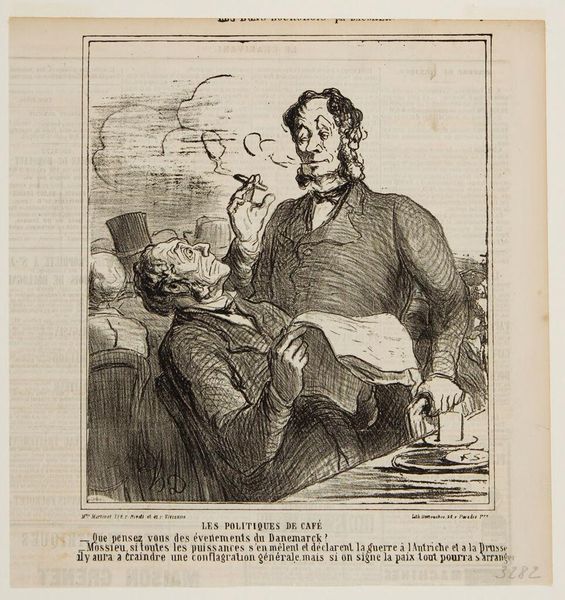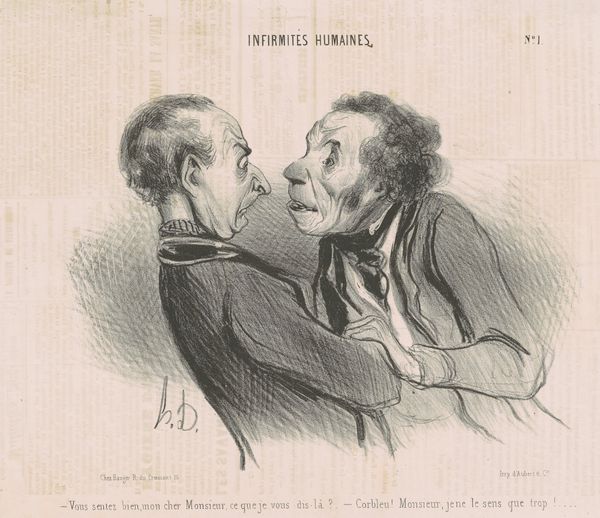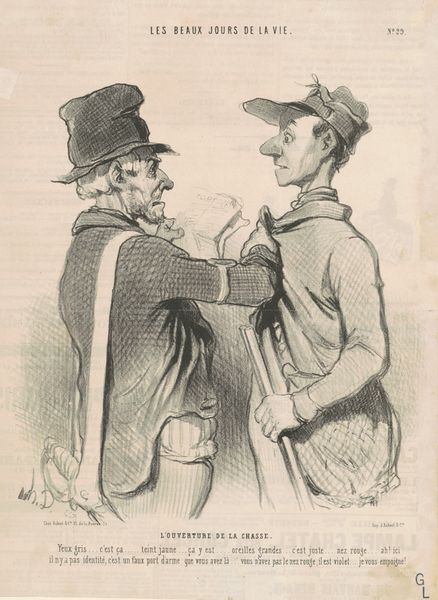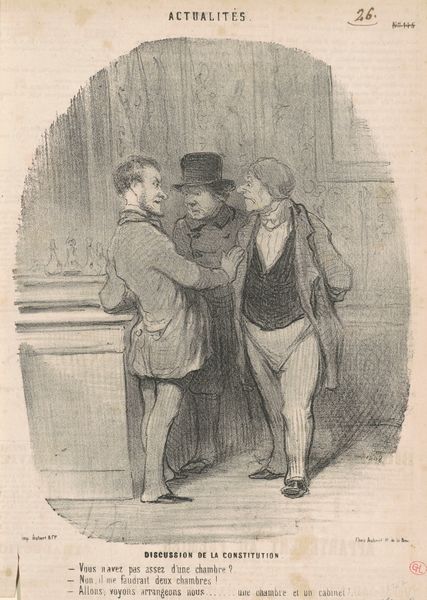
Un échantillon de ce qu'on appèll...les beaux de paris c. 19th century
0:00
0:00
drawing, print, graphite
#
portrait
#
pencil drawn
#
drawing
# print
#
caricature
#
pencil sketch
#
graphite
#
genre-painting
Copyright: National Gallery of Art: CC0 1.0
Curator: Ah, here we have Honoré Daumier’s "Un échantillon de ce qu'on appelle...les beaux de Paris," a print likely made from a graphite drawing, dating from around the 19th century. The title translates roughly to "A sample of what one sometimes calls the beauties of Paris." What strikes you immediately? Editor: There’s a delightful absurdity to these caricatures, wouldn't you say? These men practically vibrate with personality, captured with just the subtlest flick of Daumier’s pencil. The stark lighting isolates them in such a manner! They feel almost confrontational, yet tragically funny. Curator: Precisely. Daumier was a master of lithography, and his skill shines through in the very texture of the print. We can analyze the methods he employed to satirize the bourgeoisie - observing not only his utilization of line and shadow, but the socioeconomic realities these representations mirror. Mass-produced prints like this were circulated widely, allowing him to disseminate his critiques of Parisian society. Editor: Yes, one gets the impression of overhearing a particularly biting bit of street gossip. I can almost feel their self-importance, puffed up like pigeons on a windowsill! Their long noses are definitely exaggerated, which creates a wonderfully disdainful silhouette, no? Curator: Exaggeration became a core element of Daumier's method, often reflecting the material realities of power and class. He masterfully employed his access to printing technology to shape public sentiment. These were not mere portrait drawings, but manufactured political statements designed for broad distribution and consumption. The materiality itself facilitated his message. Editor: In their own awkward, haughty way, aren't they beautiful? He seems to love them, though. There's a gentleness there amidst the lampooning. Maybe it's that I myself might find my own silhouette lampooned on these same pages…! Curator: The 'beauties' become tools, essentially, with which he etches a broader picture of Parisian society and the modes through which meaning gets fabricated and propagated, wouldn't you agree? His artistic skill isn't simply for pictorial representation, but actually shapes critical awareness. Editor: An insightful reminder that art never exists in a vacuum, does it? Curator: Exactly. This print encourages us to actively deconstruct how images participate in societal dialogues, challenging perceptions of power, taste, and material influence.
Comments
No comments
Be the first to comment and join the conversation on the ultimate creative platform.
